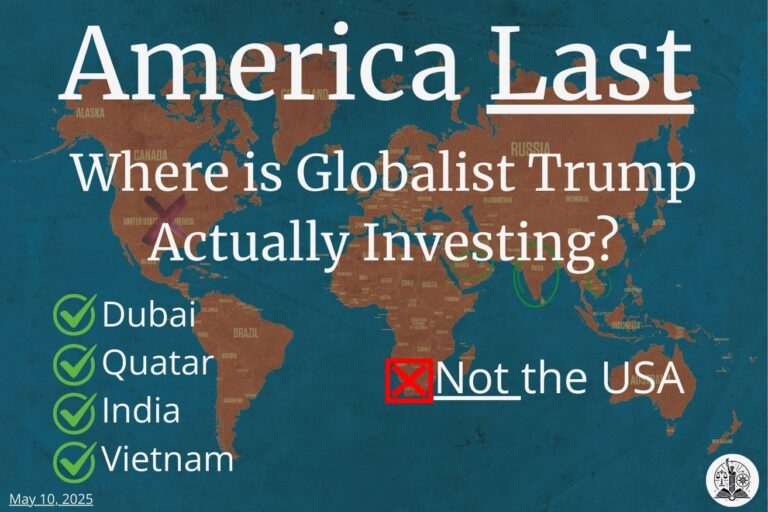The USAID “Scandal” and the Playbook of Manufactured Outrage
Note – this was initially a post on Facebook, copied and reformatted to this website.
The dismantling of USAID isn’t about fraud. It’s not about waste. And it’s certainly not about making government more efficient. Instead, it’s a test case for a new era of governance—one where facts are optional, reality is shaped by cherry-picked narratives, and faith in a leader replaces independent sources of truth.
Rather than conducting an actual audit, Musk and Trump have used a familiar tactic—manufacture a scandal, flood the space with selective outrage, and use it to justify dismantling an agency they already wanted gone. It’s an attack on facts themselves—and if it works here, it will be repeated elsewhere.
The Power of Misinformation: Cherry-Picked Outrage
Misinformation doesn’t have to be an outright lie to be effective. The most powerful form of disinformation is cherry-picking—taking a real event or number, stripping it of context, and reframing it for maximum outrage.
White House Justifications for Gutting USAID vs. Reality:
- Claim: “USAID spent $6 million on tourism in Egypt.”
Reality: This funding was for education and economic development in North Sinai, not tourism. The grant was announced in 2019 during Trump’s first administration. Stripping away the date and purpose makes it sound like a recent, frivolous expenditure rather than part of an established economic aid initiative. - Claim: “USAID spent $1.5 million to promote workplace diversity in Serbia.”
Reality: This was part of a broader economic initiative to increase job opportunities in Serbia—where workplace discrimination limits economic participation. The program focused on helping businesses grow by improving inclusivity but was reframed as an ideological “waste” rather than an economic development effort. - Claim: “USAID spent $47,000 on a transgender opera in Colombia.”
Reality: This was not a USAID grant at all—it was issued by the State Department. The grant supported an arts program aimed at increasing representation in Colombia’s opera scene. By misattributing the funding to USAID and framing it solely as a “transgender opera,” the claim was designed to provoke cultural outrage rather than discuss arts funding in global diplomacy.
Could an actual audit be conducted on how these funds were used? Absolutely. In a functioning government, there should always be room for debate over whether certain initiatives are priorities or whether they are effective. But that is not what is happening here.
Instead of evaluating whether these programs delivered results or whether better alternatives exist, these numbers were stripped of context and framed for maximum outrage—not to improve policy, but to justify dismantling an agency outright.
The Case for Real Oversight vs. The Manufactured Scandal
If USAID were truly corrupt, the administration would be showing full financial audits, not vague accusations.
A proper USAID audit wouldn’t be done in a day or two based on cherry-picked spending line items. Audits—even for small organizations—are lengthy, comprehensive, and detail both strengths and weaknesses.
A Real Audit Would:
- Be conducted by independent agencies (GAO, OIG, CBO), qualified and experienced leaders, or vetted, objective external firms.
- Use full financial forensic analysis, not selective line items.
- Compare USAID to other government expenditures for context.
- Provide publicly available, transparent findings.
- Recommend measured reforms, not mass firings.
Real Audits Include:
- Positives and negatives—not just failures.
- Strengths and weaknesses—where the agency is effective and where it isn’t.
- Successes and failures—not just the failures someone wants to highlight.
- Annotated findings with full transparency—each claim links back to data.
This process takes months, not days—because an audit can’t be done by simply extracting data, running it through an algorithm (AI or otherwise), and issuing selective pronouncements.
Instead, Musk’s Department of Government Efficiency (DOGE) simply declared USAID “beyond repair” and started shutting it down—no audit needed.
This isn’t about USAID—it’s about eliminating institutions. And if they can do this to USAID, they can do it to the CDC, NOAA, or any other agency that provides inconvenient facts.
What’s Next? The Broader Attack on Independent Agencies
The attack on USAID is just the beginning. If this strategy works, other congressionally created and funded agencies that provide oversight, enforce regulations, or provide objective information will be next.
Who’s Next on the Target List?
- CFPB (Consumer Financial Protection Bureau) – Criticized for interfering in free markets and overregulating financial institutions.
- SEC (Securities and Exchange Commission) – Framed as an obstacle to economic growth by restricting corporate and investment practices.
- IRS – Cast as a weaponized agency persecuting political enemies.
- Pentagon – Attacked over spending inefficiencies and social policies.
- Federal Reserve – Accused of economic manipulation and globalist control.
- DOJ & FBI – Portrayed as corrupt institutions waging partisan investigations.
- Department of Education – Framed as a wasteful bureaucracy pushing ideological agendas.
- EPA – Blamed for stifling business growth through overregulation.
Each will be misrepresented and undermined not through comprehensive audits and evidence-based reform, but through cherry-picked data, selective outrage, and preordained conclusions that justify dismantling their authority.
The Ironic Truth: Real Audits Would Be Beneficial
The irony? Real audits of these agencies would be fantastic. If the goal were truly efficiency, effectiveness, and responsible governance, independent reviews would be welcomed.
A thorough, transparent audit of USAID, the CFPB, the SEC, the IRS, or the Pentagon would provide critical insights for better decision-making. But that’s not what’s happening.
Instead of pursuing genuine oversight and accountability, the administration is manufacturing outrage and using it as a justification to dismantle institutions outright—not to fix them, but to eliminate their independence.
The Endgame: A Government Without Independent Oversight
The final step in this process isn’t just about cutting waste—it’s about removing any part of the government that isn’t directly controlled by the executive branch.
- No independent oversight.
- No neutral agencies providing inconvenient data.
- No checks on power.
This isn’t about USAID—it’s about whether any institution will be allowed to exist outside the direct control of a single leader.
The next time an agency or institution is suddenly declared “too corrupt to fix,” ask yourself:
- Where’s the full audit?
- Why is the data missing?
- Who benefits from removing this institution?
When facts disappear, power takes their place. That’s what’s happening here.
Sources Include:
https://www.whitehouse.gov/fact-sheets/2025/02/at-usaid-waste-and-abuse-runs-deep/
https://apnews.com/article/c544a5fa1fe788da10ec714f462883d1
https://2017-2020.usaid.gov/egypt/fact-sheets/north-sinai
https://www.usaspending.gov/award/ASST_NON_72016922FA00001_7200
https://2017-2020.usaid.gov/egypt/press-releases/dec-16-2019-united-states-commits-6-million-bilateral-assistance-egypt
https://www.theguardian.com/us-news/2025/jan/24/foreign-aid-israel-egypt
https://en.wikipedia.org/wiki/United_States_Agency_for_International_Development







